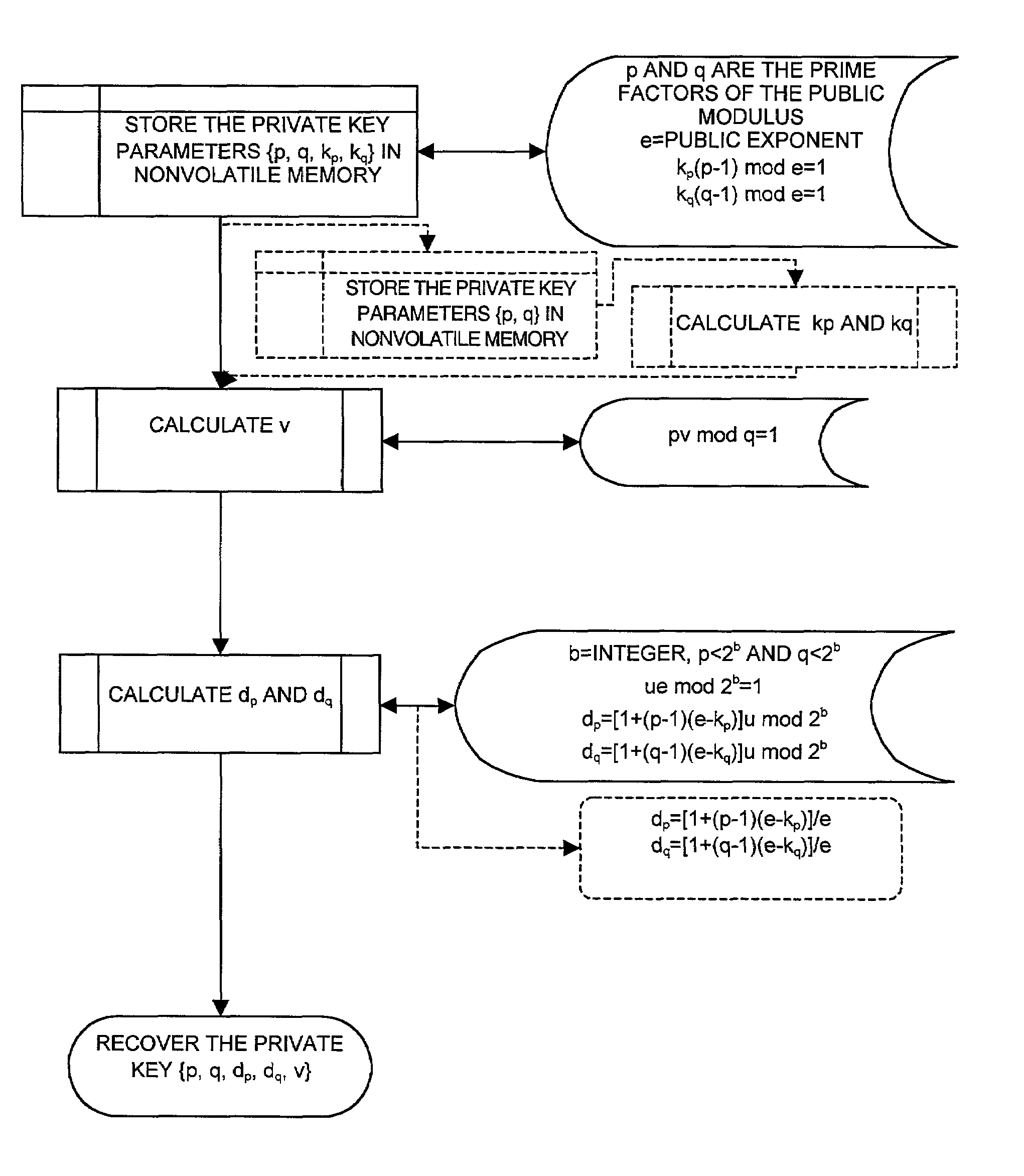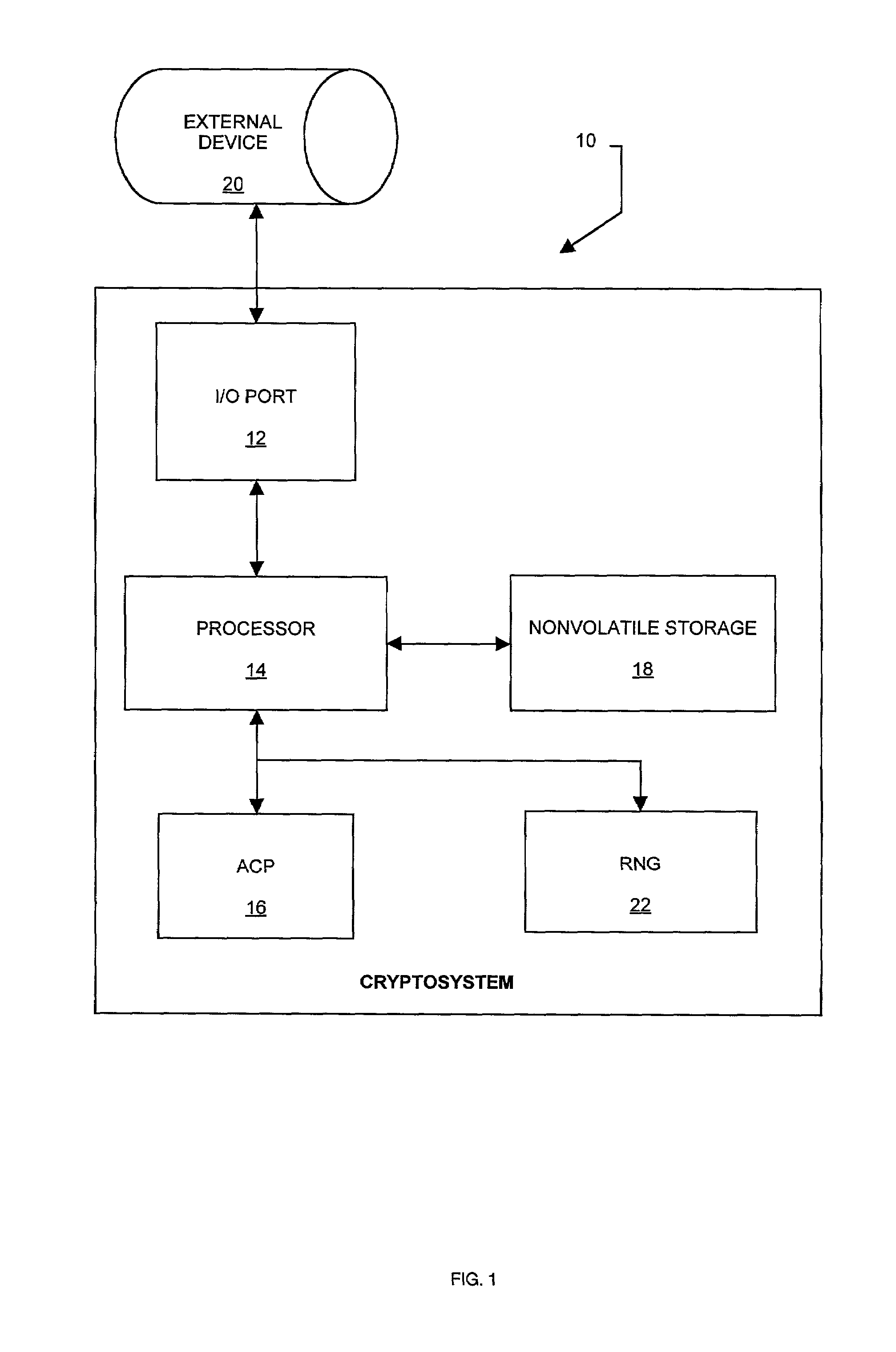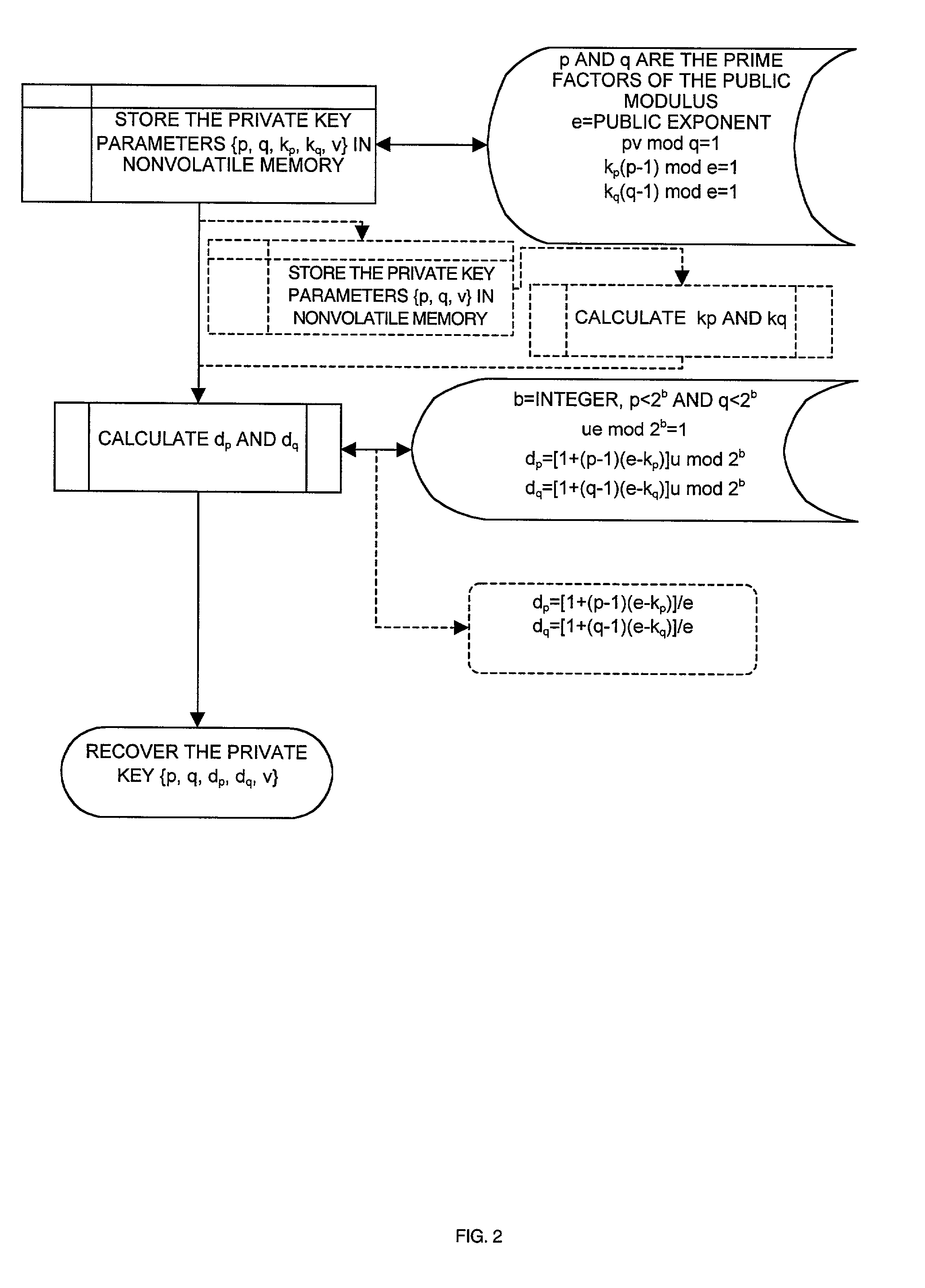Cryptography private key storage and recovery method and apparatus
a private key and encryption technology, applied in the field of encryption systems, can solve the problems of increasing the difficulty of determining factors p and q such that n=pq, and the difficulty of determining factors, so as to achieve less storage space, improve computational efficiency, and reduce the difficulty of factoring problems
- Summary
- Abstract
- Description
- Claims
- Application Information
AI Technical Summary
Benefits of technology
Problems solved by technology
Method used
Image
Examples
Embodiment Construction
[0054]Persons of ordinary skill in the art will realize that the following description of the present invention is illustrative only and not in any way limiting. Other embodiments of the invention will readily suggest themselves to such skilled persons having the benefit of this disclosure.
[0055]FIG. 1 illustrates a cryptosystem 10 capable of taking advantage of the invention. The cryptosystem 10 signs and decrypts messages provided to it via an I / O port 12. The cryptosystem 10 uses the RSA scheme to perform the signing and decrypting. The cryptosystem 10 has a processor 14 that controls all operations of the cryptosystem 10. The cryptosystem 10 has an arithmetic coprocessor (ACP) 16 that facilitates the computations used in the RSA scheme when signing and decrypting. The private key used to perform the signing and decrypting is stored in nonvolatile storage 18 within the crytposystem 10.
[0056]The cryptosystem 10 is capable of storing a collection of private keys in the nonvolatile ...
PUM
 Login to View More
Login to View More Abstract
Description
Claims
Application Information
 Login to View More
Login to View More - R&D
- Intellectual Property
- Life Sciences
- Materials
- Tech Scout
- Unparalleled Data Quality
- Higher Quality Content
- 60% Fewer Hallucinations
Browse by: Latest US Patents, China's latest patents, Technical Efficacy Thesaurus, Application Domain, Technology Topic, Popular Technical Reports.
© 2025 PatSnap. All rights reserved.Legal|Privacy policy|Modern Slavery Act Transparency Statement|Sitemap|About US| Contact US: help@patsnap.com



